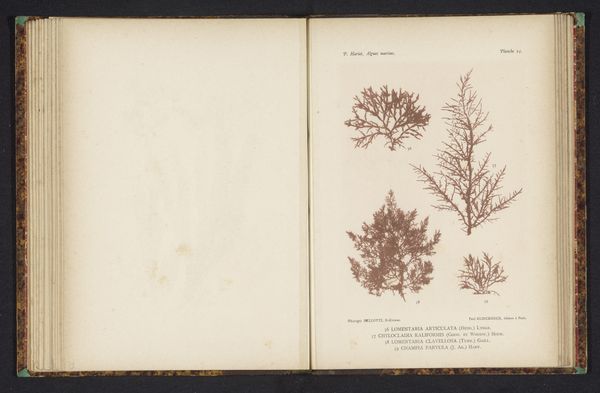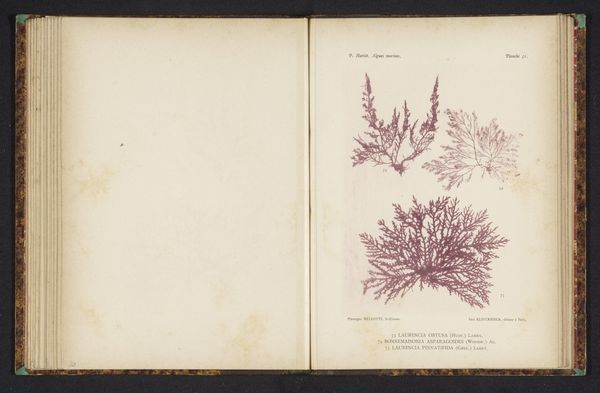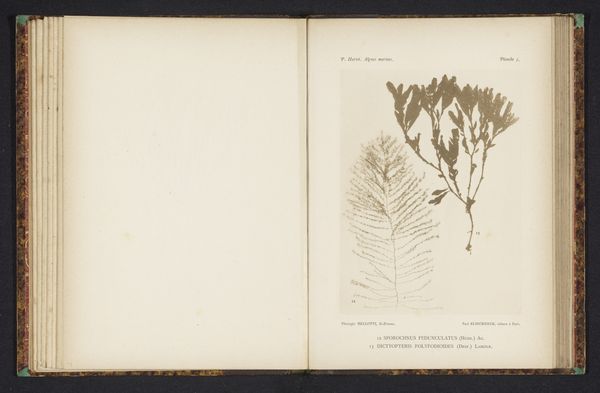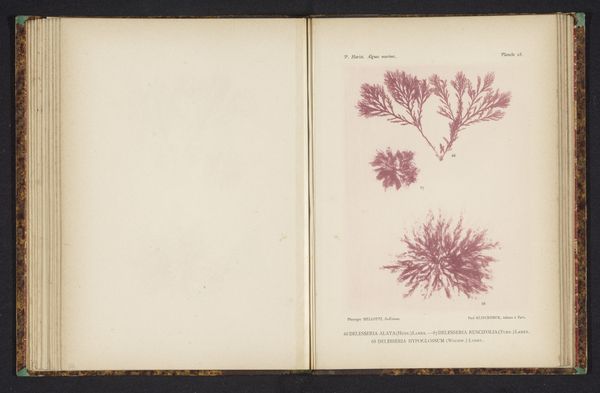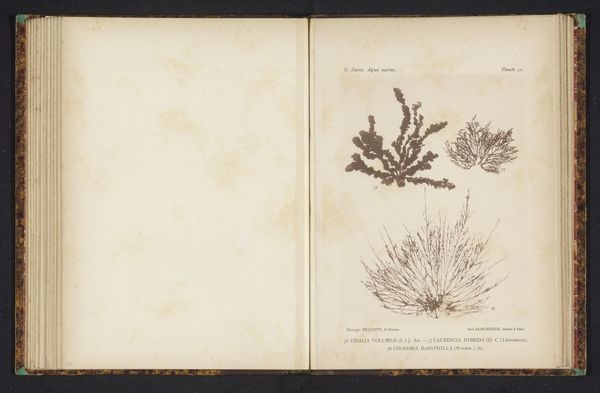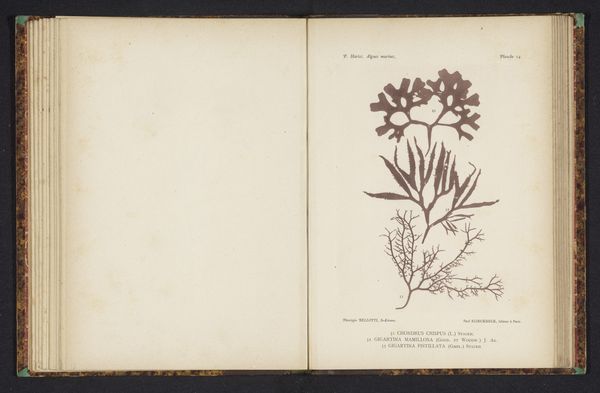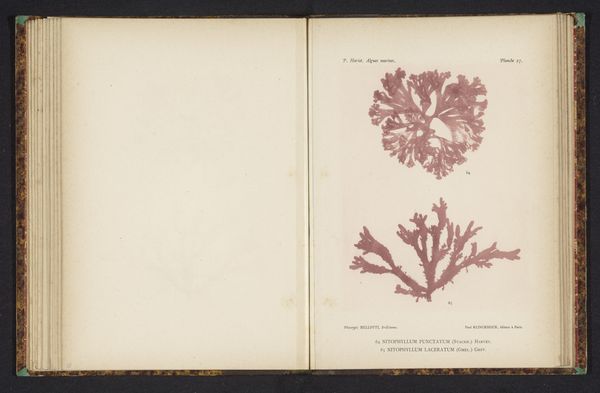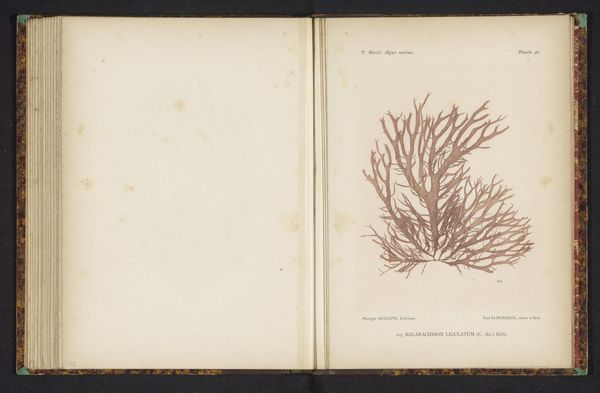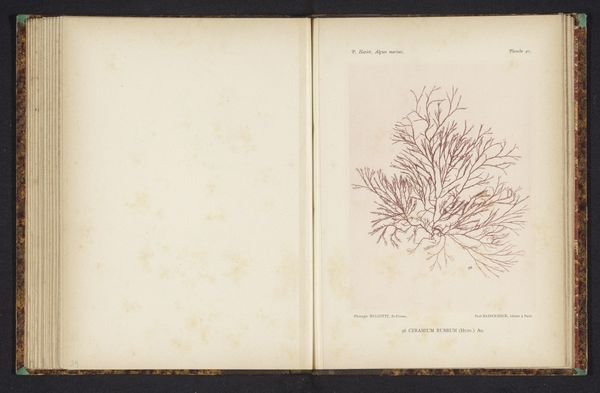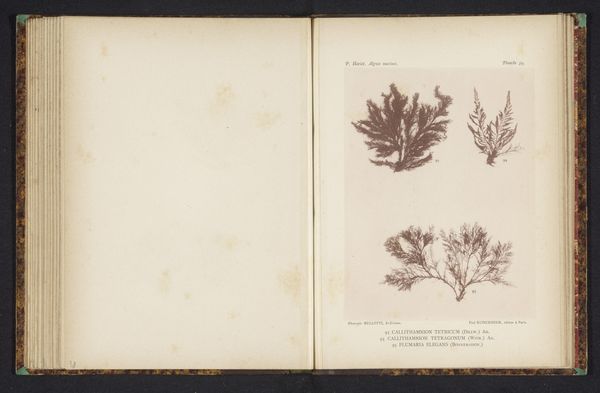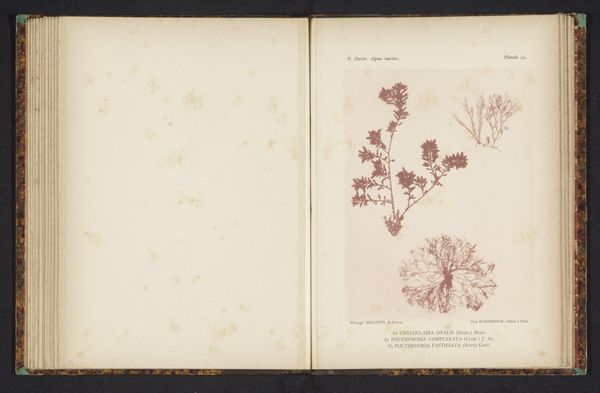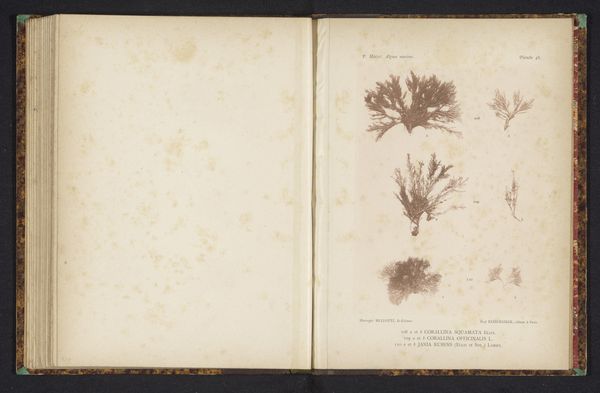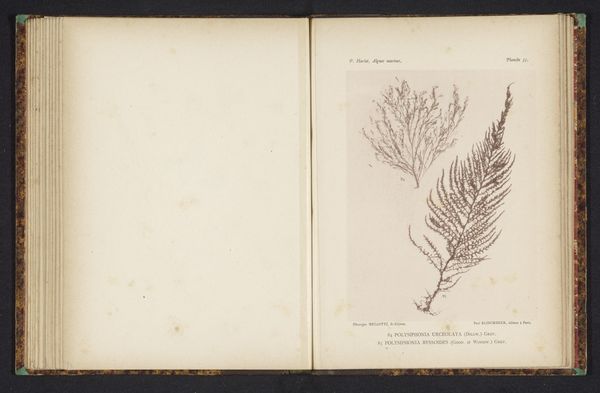
drawing, print, paper, ink
#
drawing
# print
#
paper
#
ink
#
coloured pencil
Dimensions: height 161 mm, width 119 mm
Copyright: Rijks Museum: Open Domain
Editor: This print, titled "Drie soorten zeewier," which translates to "Three Types of Seaweed," appears to be from before 1892. It’s printed on paper using ink and possibly colored pencil, depicting different seaweed specimens. There's something so serene and methodical about it. What do you see in this piece? Curator: What strikes me is how this seemingly simple scientific illustration is deeply intertwined with power and colonialism. Consider how botanical illustration, and the classification of the natural world, were often driven by European exploration and exploitation. Editor: Can you elaborate? Curator: The act of classifying these seaweeds is not neutral. It's about establishing a particular gaze, a system of knowledge that often served to legitimize the control and extraction of resources from colonized lands. Who gets to name, to categorize, and therefore, in a way, to own these natural elements? Editor: So, it's about questioning the assumed objectivity of scientific representation? Curator: Exactly! Look at the way the specimens are isolated on the page, removed from their natural environment. It echoes the process of taking resources and knowledge out of their original context and placing them within a European framework. Editor: I never would have thought about it that way, but it makes perfect sense! I was just seeing seaweed. Curator: It's about looking beyond the surface to understand the embedded narratives and power dynamics. The print itself becomes a historical artifact, whispering stories of scientific ambition, colonial power, and the very human act of trying to make sense of the world around us. Editor: Thank you! I learned so much today.
Comments
No comments
Be the first to comment and join the conversation on the ultimate creative platform.
